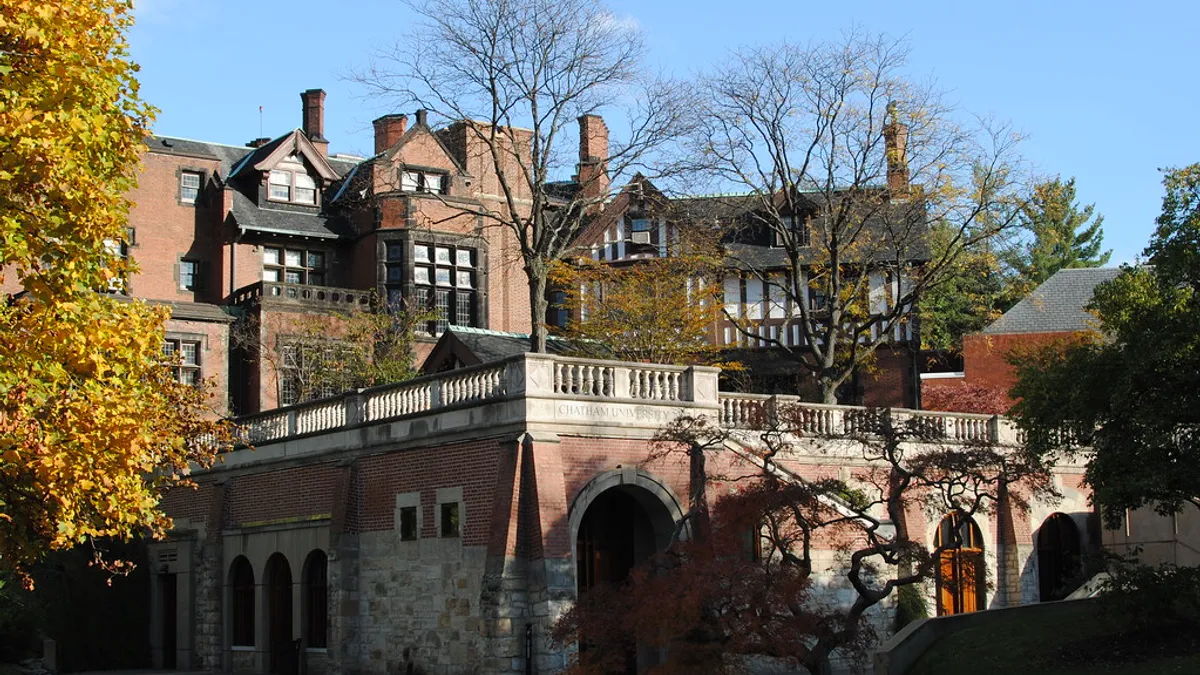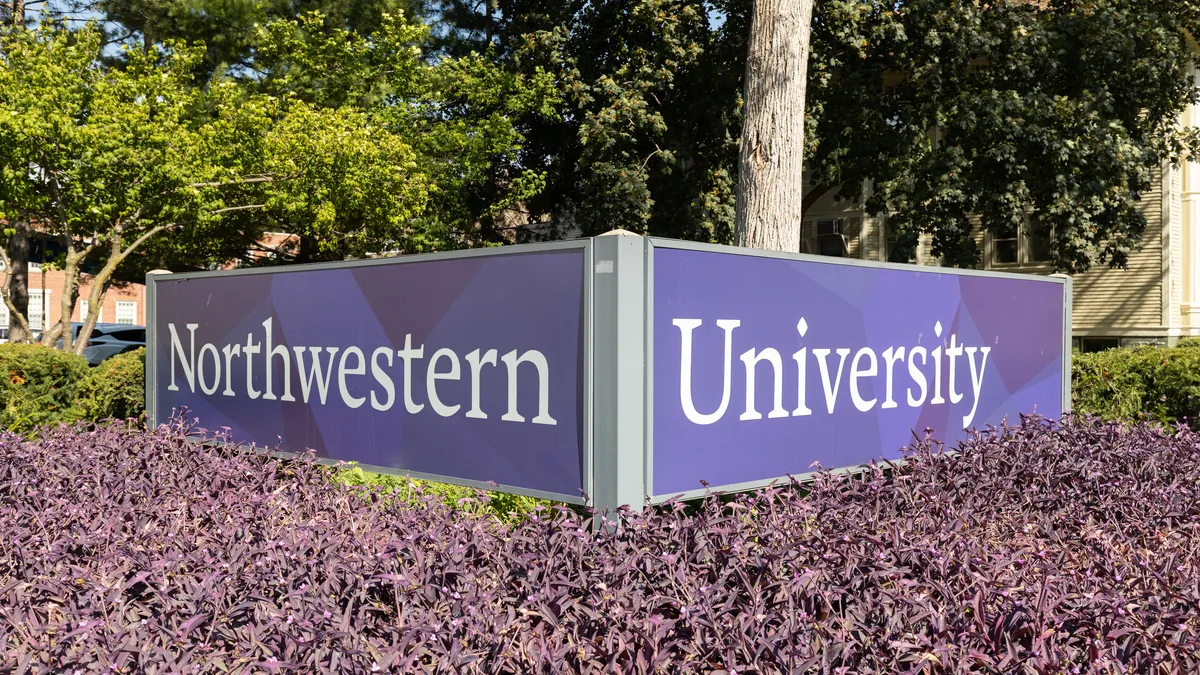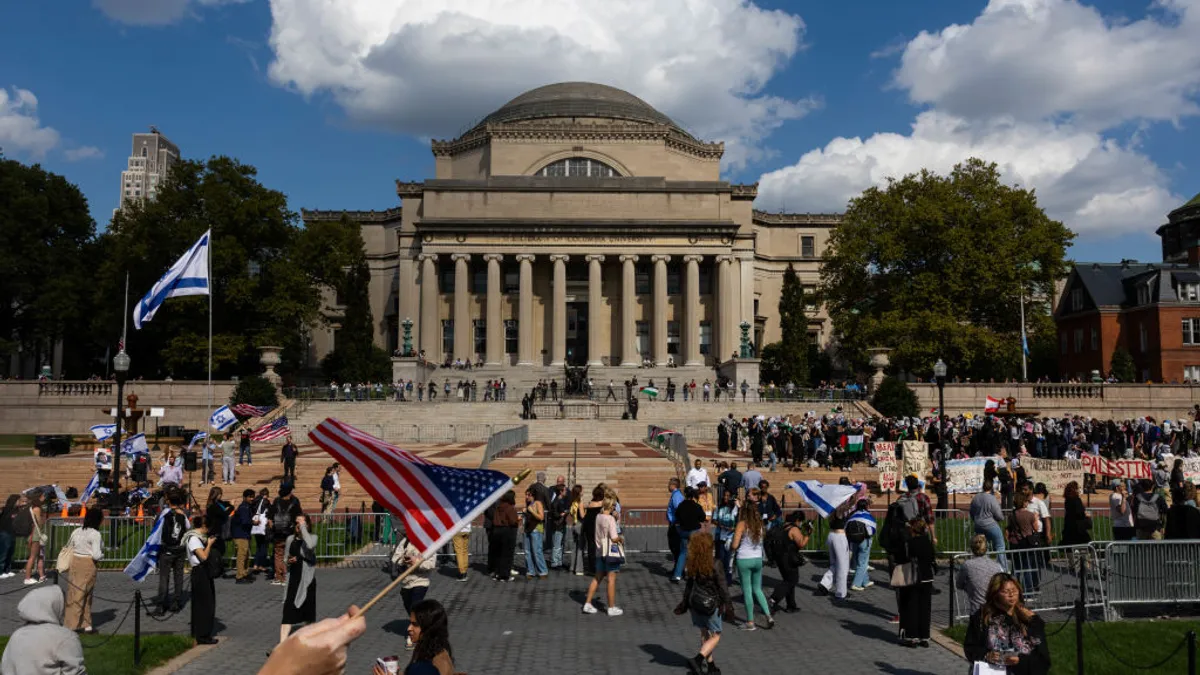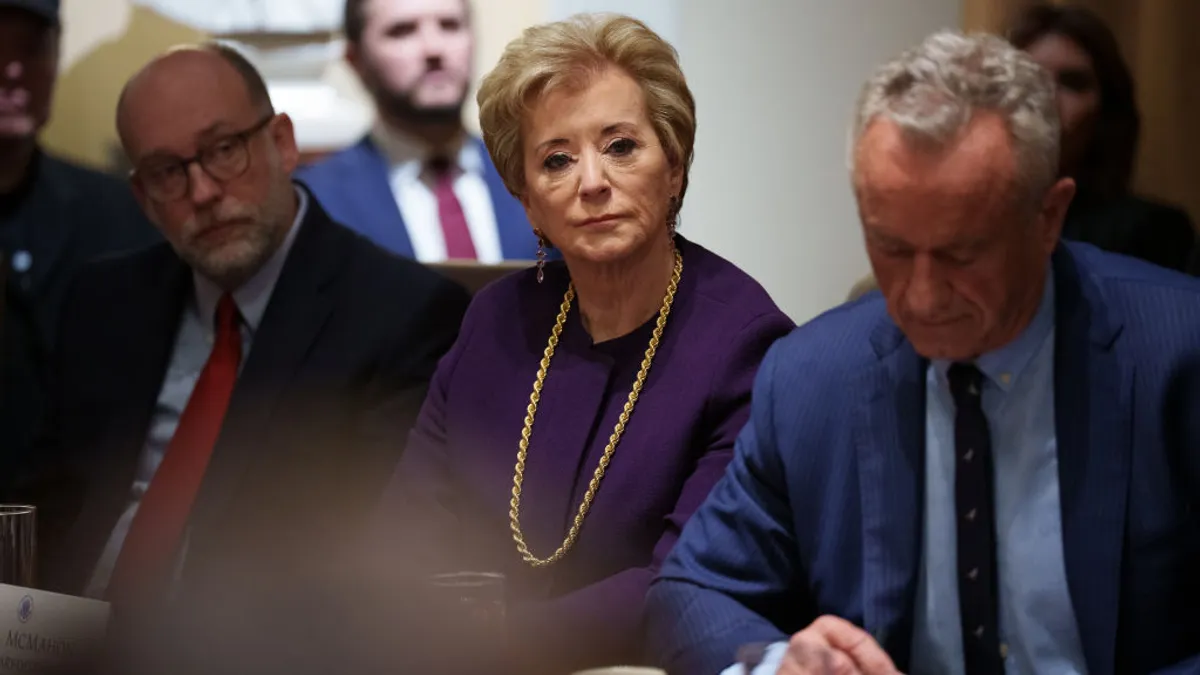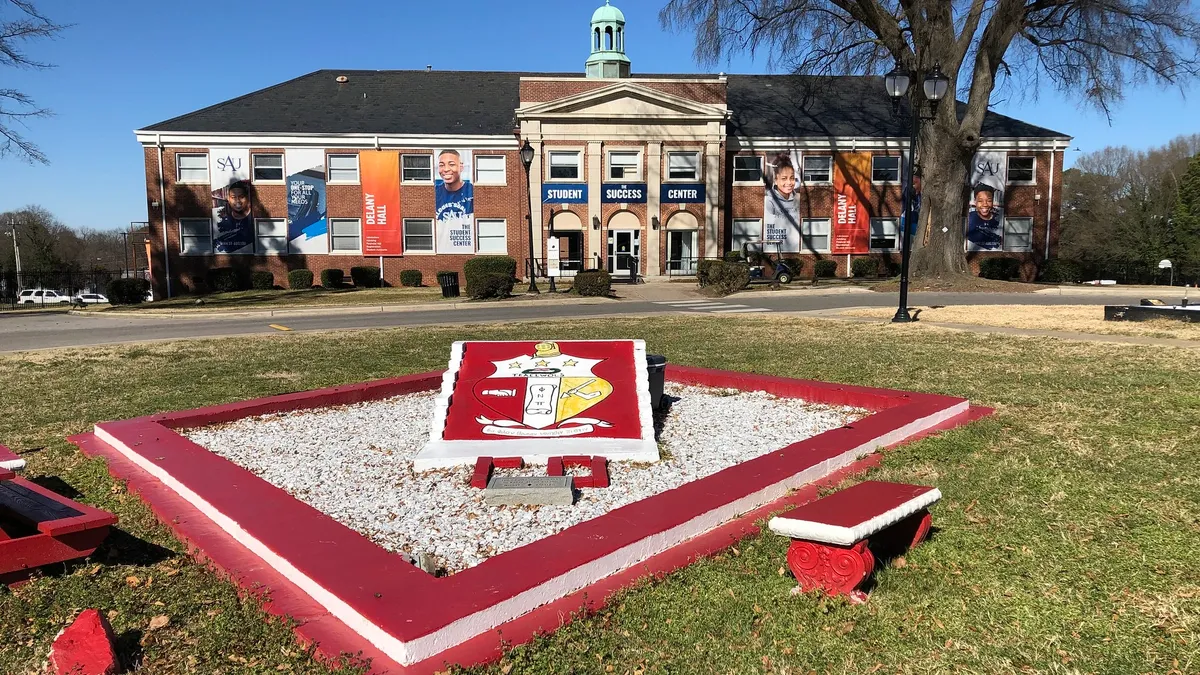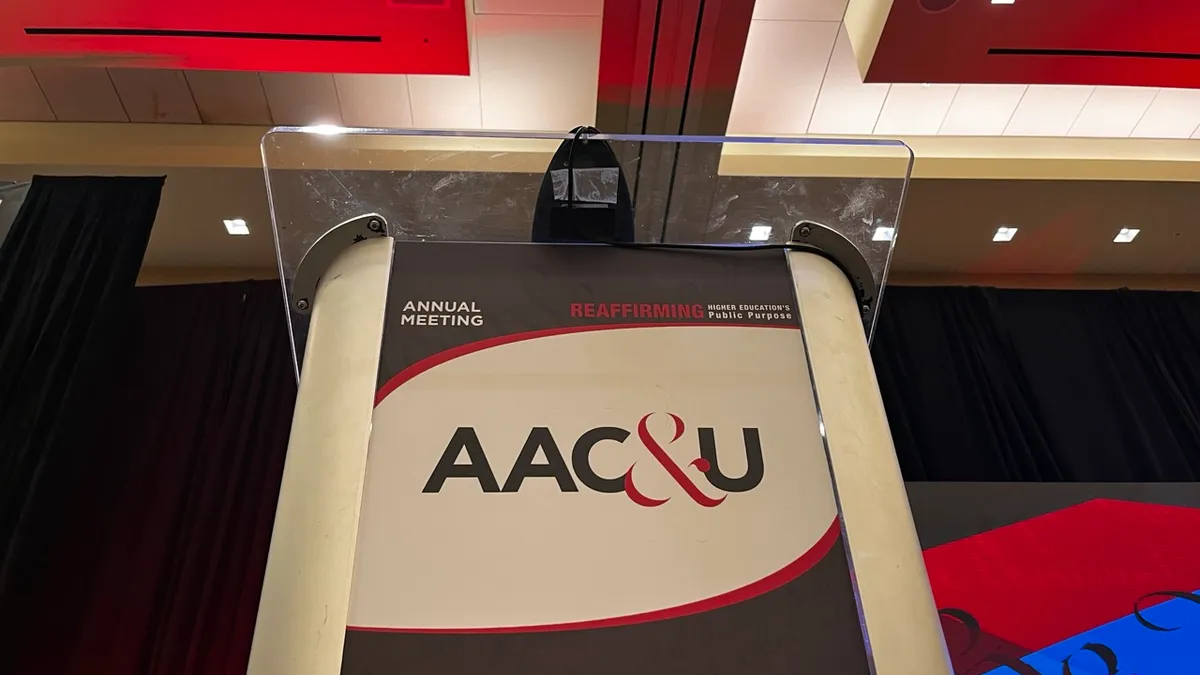For decades, tenure has become less and less common for college faculty members.
About 70% of faculty were tenured or on the tenure track 40 years ago, according to the American Federation of Teachers. Now, three-quarters aren't eligible for tenure.
Faculty groups consider tenure — indefinite academic appointments that prevent professors from being terminated without specific cause — to be a cornerstone of academic freedom and a big part of what makes higher education valuable. Tenure lets professors teach and research potentially controversial topics without fear of reprisal, according to the American Association of University Professors.
So it's notable that one university recently decided to reinstate tenure after getting rid of it almost two decades ago.
In 2005, Chatham University, a private nonprofit institution in Pittsburgh, switched from tenure to what it called a Capstone system, a series of contract renewals for increasing durations. This February, its trustees approved a new tenure system to start July 1.
Joseph MacNeil, Chatham's interim dean for the School of Arts, Science & Business, chaired a university committee that recommended reinstating the tenure system. He spoke with Higher Ed Dive about what prompted university leaders to bring tenure back and why Chatham moved away from it in the first place.
This interview has been edited for brevity and clarity.
HIGHER ED DIVE: Why did Chatham initially do away with tenure?
JOSEPH MACNEIL: When the institution first added graduate programs, many were in the health sciences. The educators hired for those programs were essentially clinical faculty, hired on 12-month contracts with a higher teaching load and no research expectations. So there was no traditional tenure-track role for them. As those programs became more successful and hired more, we ended up with a seriously divided faculty.
The solution that we came to, which we called a Capstone contract, was not entirely unlike tenure. It introduced research expectations for all of our faculty, including our clinical faculty. And instead of coming up for tenure, they came up for a five-year Capstone contract, which had to get renewed. We modified the length of contracts slightly in the interim. That's how we got from the original tenure model to the Capstone.
What prompted the shift away from Chatham's Capstone model?
The senior faculty, as they came up for their second, third, fourth contract renewal, felt restricted in the way they had to invest their energy and grow their careers. They were essentially coming up for tenure every six years and were being evaluated on the same set of criteria each time. So they didn't feel like they had the latitude to take on more service activities or move into faculty governance and leadership roles.
The other one issue was, every time someone came up for renewal, they were facing the possibility that it wouldn't happen. In the more than 15 years we had Capstones, we never failed to renew a contract. But it turns out that process was a serious morale drain on our senior faculty.
When I tell you that now, it seems pretty obvious. But at the committee meeting when we first heard it expressed, it took everybody by surprise because it hadn't been talked about in the open before.
What does the process for reinstating tenure look like?
Some of the stipulations that were put in place when we moved to the Capstone model will stay in place. The board will still have the right to financial exigency, their ability to decide that a position or department is not financially viable. They're able to make this call at the departmental level rather than the institutional level, so the whole university doesn't have to be going bankrupt to decide that a program in, say, modeling mainframe computers is just not worth continued investment.
Our model also says if a faculty member completely fails to perform their job for two years in a five-year rolling model, then they can come up for review in the same style as our old Capstone review. Chatham's definition of tenure provides job security and faculty support but it isn't a guarantee of a job for life.
Are there any costs associated with this transition?
There is no significant cost. Actually, there are some significant savings but they don't show up on the budget sheet.
We calculated that we were spending 75 person hours for every Capstone review that we were doing, and we projected in the next three years we would have done 12 to 15 reviews a year. That's a thousand-something hours of labor that's no longer required. Under tenure, there will be a bit more work for the deans, who may need to provide some course corrections for tenured faculty members. But in the end, it's an overall time savings for the institution.
How do you anticipate this impacting hiring or recruitment?
We knew of instances where we had gotten to the point of making people offers, and they turned us down because they were getting offers from tenure-track schools. Beyond that, we don't know the number of people who are never applying in the first place.
Like every institution in the country, we are working hard to diversify our faculty, and I think we were having trouble attracting a really good diverse pool because they were able to get tenure-track offers elsewhere. We have a fabulous faculty as it stands, so we hope tenure will make the ones who are here more interested in staying and make it easier to hire.
What surprised you about this process?
We assumed it was going to be very adversarial and that we were going to have to fight tooth and nail to get the board to listen to us. That wasn't true at all. I came away very impressed that everybody was focused on what is the best outcome for the institution.
I think one of the biggest lessons for me, as a faculty member, was that the words and language the faculty and the board use when they think about what's best does not always match up. We had to learn to translate across different academic cultures so we could explain why this was in the best interest of the institution. When we got there, everybody was on board.



